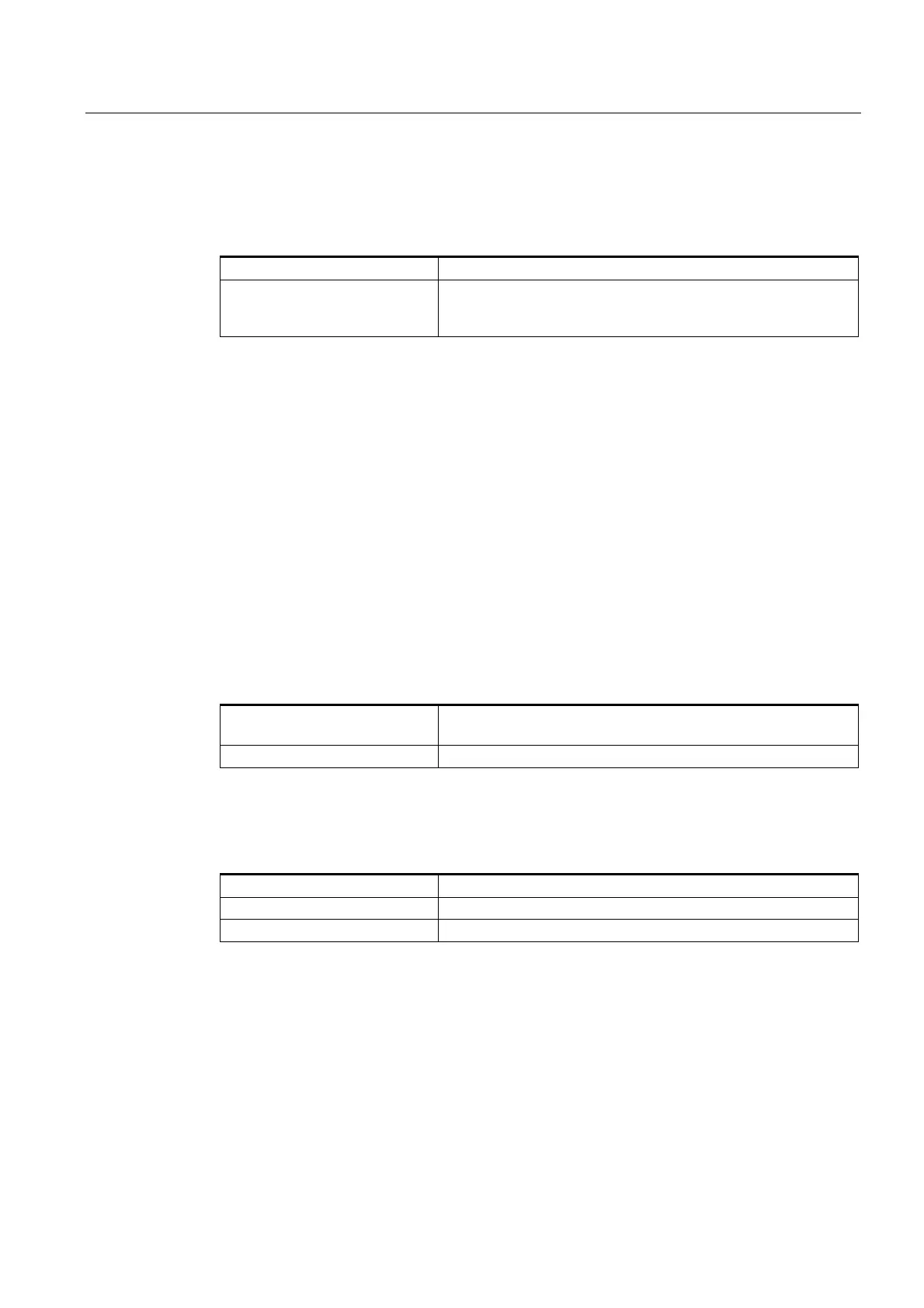Brief Description
1.3 Frames
Axis Types, Coordinate Systems, Frames (K2)
Function Manual, 08/2005 Edition, 6FC5397-0BP10-0BA0
1-7
Mirroring
You can set the axis, about which mirroring is performed, via
MD10610 MIRROR_REF_AX:
MD10610 = 0: Mirroring is performed around the programmed axis.
MD10610 = 1 or 2 or 3: Depending on the input value, mirroring is mapped onto the
mirroring of a specific reference axis and rotation of two other
geometry axes.
Frame chaining
The current FRAME is composed of the total basic frame, the settable FRAME, the 4 system
frames and the programmable FRAME.
The current complete frame is calculated according to the formula below:
$P_ACTFRAME = $P_SETFRAME : $P_EXTFRAME : $P_PARTFRAME :
$P_ACTBFRAME : $P_IFRAME : $P_TOOLFRAME :
$P_PFRAME
Frames with G91
Incremental programming with G91 is defined such that the compensation value is traversed
additively to the incrementally programmed value when a zero offset is selected.
The following are set via the setting data:
SD42440 FRAME_OFFSET_INCR_PROG
Value = 1 Zero offset is applied on FRAME and incremental programming of
an axis (= default setting).
Value = 0 Only the programmed path is traversed.
Suppression of frames
Current frames can be suppressed with the following instructions:
G53
Current zero offset (ZO)
G153
Current frame, incl. basic frame
SUPA
Current ZO, incl. programmed offsets
NCU global basic frames
For rotary indexing machine technology, for example, a channel must be used to define
frames for other channels. These cross-channel frames are shown in the "NCU global basic
frames" below.

